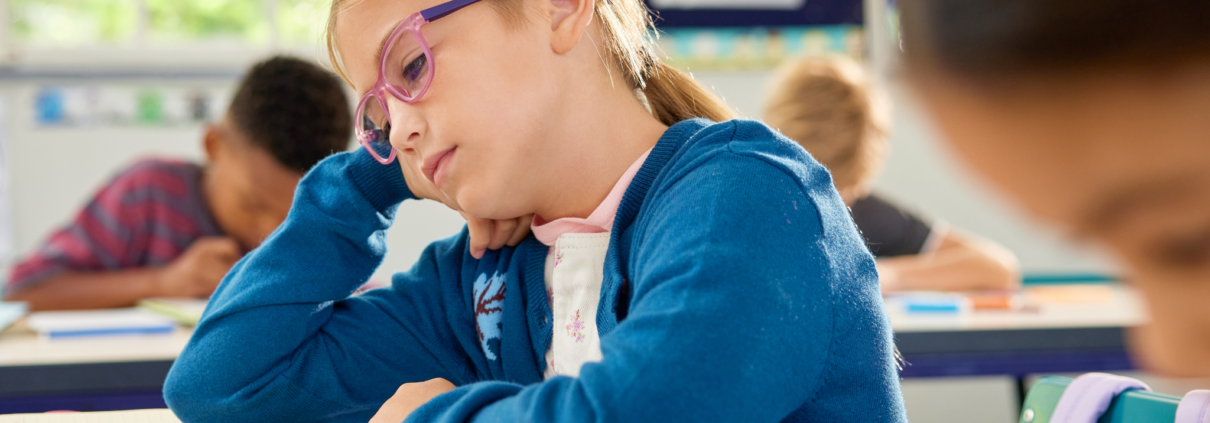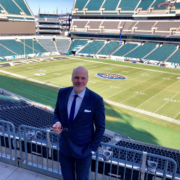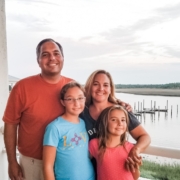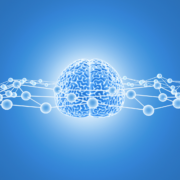Common learning disabilities and what causes them
Learning disabilities, regularly deemed learning disorders, are the most common disability seen in children. Data from the National Institutes of Health indicates that one out of every seven Americans has a learning disability of some kind. Affecting the ability to process or acquire skills related to reading, writing, and mathematics, these neurodevelopmental disorders are not related to intelligence—they’re simply a difference in brain function. Put differently, they characterize different neurotypes.
Typically associated with school-aged learners, the causes of learning disabilities are still being understood, and how we address them is still evolving. If someone you love has a learning disability, understanding it—its causes, its challenges, and its solutions—is tantamount to identifying strategies for their success.
What are the most common learning disabilities?
There are three categories of learning disabilities:
- Dyslexia. Dyslexia is a broader term than many realize, affecting a person’s reading abilities. It can look like issues with spelling, rhyming, sounding out words, letter recognition and more.
- Dysgraphia. Affecting writing abilities, dysgraphia can manifest as issues with handwriting, speed of writing and written grammar. Dysgraphia can also make it challenging for individuals to organize and express ideas in writing, impacting performance in school and beyond.
- Dyscalculia. This learning disability refers to issues with number-based information and math. It could be seen in a child’s ability to count, do memory calculations, understand multiplication tables, tell time and more.
The critical thing to understand about learning disabilities, said Dr. Jack Fletcher, professor of psychology at the University of Houston, is that “we’re talking about the lower end of a normal distribution of achievement skills, where there’s no clear line that separates or demarcates the disability.” Far from an intelligence indicator or weakness with subject matter, a disability exists only when a child isn’t acquiring skills in a particular academic area and struggles with traditional instruction—and there’s a pervasive reason why.
(This site, from the Learning Disabilities Association of America, is a great general resource for information about learning disabilities.”
Dyslexia: The most common learning disability
Dyslexia is hardly a rarity. Some organizations, from Yale to the NIH, say the disability affects 20 percent of the population. “One thing to keep in mind is that [dyslexia] isn’t a binary,” said Dr. Rebecca Gotlieb, an educational neuroscientist at the UCLA School of Education and Information Studies. For that reason, prevalence can be difficult to determine. “It’s not like a COVID test, where you have it or you don’t; it’s something that exists on a continuum,” She added.
Dyslexia is often misunderstood by the general population.
“When people hear the word ‘dyslexia,’ they tend to think of flipping letters, or they think of visual problems,” said Dr. Kelly King, a clinical neuropsychologist and associate professor at the University of Minnesota. “It’s not a visual issue; it’s a phonics issue.”
Dr. King said children can have difficulties with letter recognition and rhyming, problems at the single-word reading level, problems with fluency and comprehension, and beyond.
Other learning disabilities
Dysgraphia is also incredibly common, with estimates ranging from 5 to 30 percent of the population. The number varies greatly due to discrepancies in definition and the difficulty in diagnosing it. Math-based learning disorders (remember, these fall into the category of dyscalculia) are the least common, affecting closer to 6 percent of the population.
Many of these percentages reflect a population overlap, since often learning disabilities are comorbid. This means one learning disability co-occurs with at least another. If a child has a learning disability in one area, like reading, they’re more likely to also struggle with writing and math.
“Though learning disabilities affect different brain structures, they tend to involve areas of the brain that are important for the processing of language and symbols,” said Dr. Jill Stewart, a board-certified clinical neuropsychologist with Duke University. “All three of those subjects have that in common.”
ADHD, while not a learning disability, can also co-occur with issues like dyslexia—or it can stand alone. Attention greatly impacts reading skills, making it appear like a child has a reading disorder when such is not the case. It’s a pattern most visibly seen in boys, who are twice as likely to be diagnosed with ADHD and twice as likely to be diagnosed with a learning disability. This is currently an area of research.
Another learning disability that has been in the news recently: Non-Verbal Learning Disorder, or NVLD. This is a term that refers to challenges with nonverbal skills such as motor, visual-spatial, and social skills.
The NVLD Project is a nonprofit organization that aims to raise awareness about this disability.

What causes learning disabilities?
There is a genetic basis to dyslexia and other learning disabilities—twin studies show higher rates in monozygotic versus dizygotic (identical versus fraternal) twins, for example. While there are no single genes that determine whether a child has a learning disability, there are organizations of genes—called quantitative trait loci—that are essentially genetic factors that put kids at risk, said Dr. Fletcher.
Environment matters, too.
“The literacy context in which a child finds themselves can greatly aid their literacy development,” said Dr. Gotlieb. Exposure to songs, sounds, music, talking, interacting—it all contributes to the brain’s linguistic environment.
Complicating matters, the lines separating heritability and environment aren’t always clear. Say a parent has dyslexia, for instance. They may not be an avid reader, they may not have books in the home, and subsequently, the child may not spend time at home reading. “This biological-environmental interaction can blur the lines between nature and nurture,” Dr. King said.
Regardless of a disability’s causes, a better way to think about a child having a learning disability is that they simply have genes that make it more difficult for the brain to reorganize, so they need more intensive, more explicit instruction.
“If they don’t get it, the brain won’t organize the way it needs to; if they don’t get it early, they’ll lag behind in traditional learning environments,” Dr. Fletcher said.
But if they do receive that intensive, explicit instruction, the brain can reorganize—and the academic lag can disappear.
Prevention and intervention
During the 2022–23 school year, 15 percent of all public school students in America—7.5 million students—received special education services, with 32 percent of those students receiving services related to learning disabilities. To be clear, learning disabilities do not correlate to IQ or intelligence. “What I think is really helpful,” said Dr. Fletcher, “is to think of a child’s learning disability not as a problem with aptitude, but to focus instead on how the child responds to instruction.”
Instruction is key. Just as learning disabilities exist on a spectrum, the amount, intensity, and type of support a student will need to succeed will vary, according to Dr. Gotlieb. “Early identification is important, but part of that identification is understanding the underlying cause of the student’s challenge. The intervention they receive must be appropriately matched to their needs,” she said.
With all interventions, there must be an individualized approach. The same goes for prevention: With intense and tailored instruction at an early age, at-risk kids won’t necessarily develop a learning disability. Effective intervention can prevent, lessen, and manage learning disabilities entirely.
“There’s been a lot of really good work on instruction itself, and we have a pretty good idea of principles that underlie effective instruction,” said Dr. Fletcher. “But the big issue is implementation in schools, getting teachers who are trained adequately to teach kids, both in the general education classroom and for kids who don’t respond adequately to instruction.”
More and more states also have legislation that mandates early screening—a critical step in the right direction.
It’s important to note that the brain is always learning, and it’s never too late to address a learning disability. “There’s research on adults learning to read,” said Dr. Gotlieb. “Even in that population, we see neural rewiring. The brain is always changing across the entire lifespan.”
From learning disorder to learning difference
Of course, “rewiring” is another way of talking about neuroplasticity, or the brain’s ability to adapt.
“No one is born a reader,” said Dr. Fletcher, who noted that every human brain is reprogrammed to read through instruction. If traditional academic instruction isn’t what a brain responds to, it won’t reorganize its networks to support reading. “We develop reading skills based on evolutionary systems that involve language and visual attention, taking what we understand about language so that we can process print. Really, we’re still learning a lot about the brain and how it responds to instruction,” Dr. Fletcher said.
The fact that all our brains are different is a good thing, emphasized Dr .Gotlieb.
“We just went through the Olympics, right? Look at the body types of Simone Biles and Steph Curry—very, very different, and they’re both amazing athletes. But imagine if they switched sports,” Dr. Gotlieb said. Just as different body types are suited to different activities, different brains, including brains with learning disabilities, are suited to different types of excelling.
The word, “disability,” then, is truly a misnomer—especially considering prevalence rates. Roughly 10 percent of humans are left-handed, for example; instead of demanding right-handedness, we create left-handed notebooks. Similarly, there’s a growing movement to reframe learning disabilities and disorders as “learning differences.” Considering different instruction is the solution, it certainly seems an apt term.
“There needs to be this shift towards understanding that what we need to be doing in education is supporting young people in developing into who they’re meant to be, not trying to get them up to some standard,” said Dr. Gotlieb. “The more we can learn about how to move our education system in that direction, the more we will have happy and successful children—successful members of our communities.”
This article has been factchecked. For more about that process, click here.









